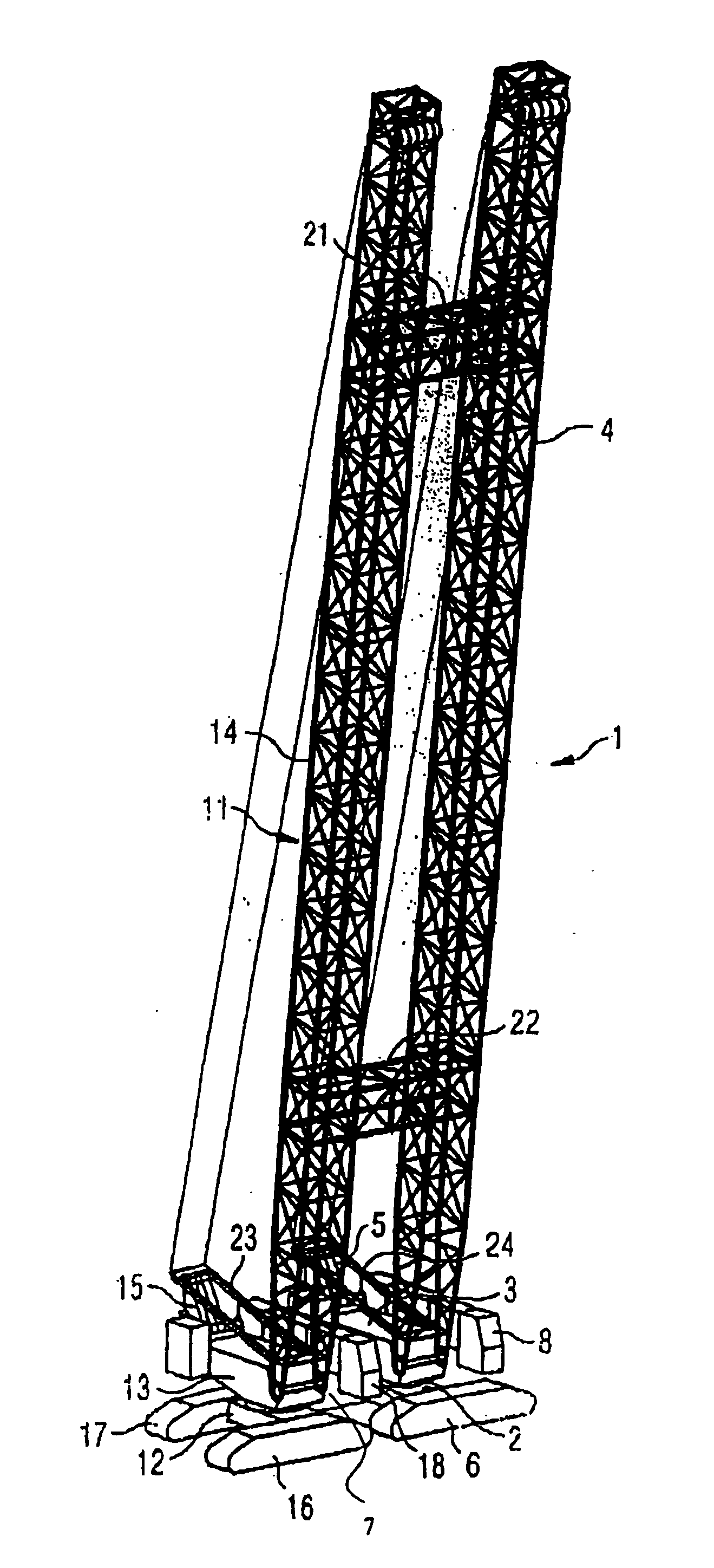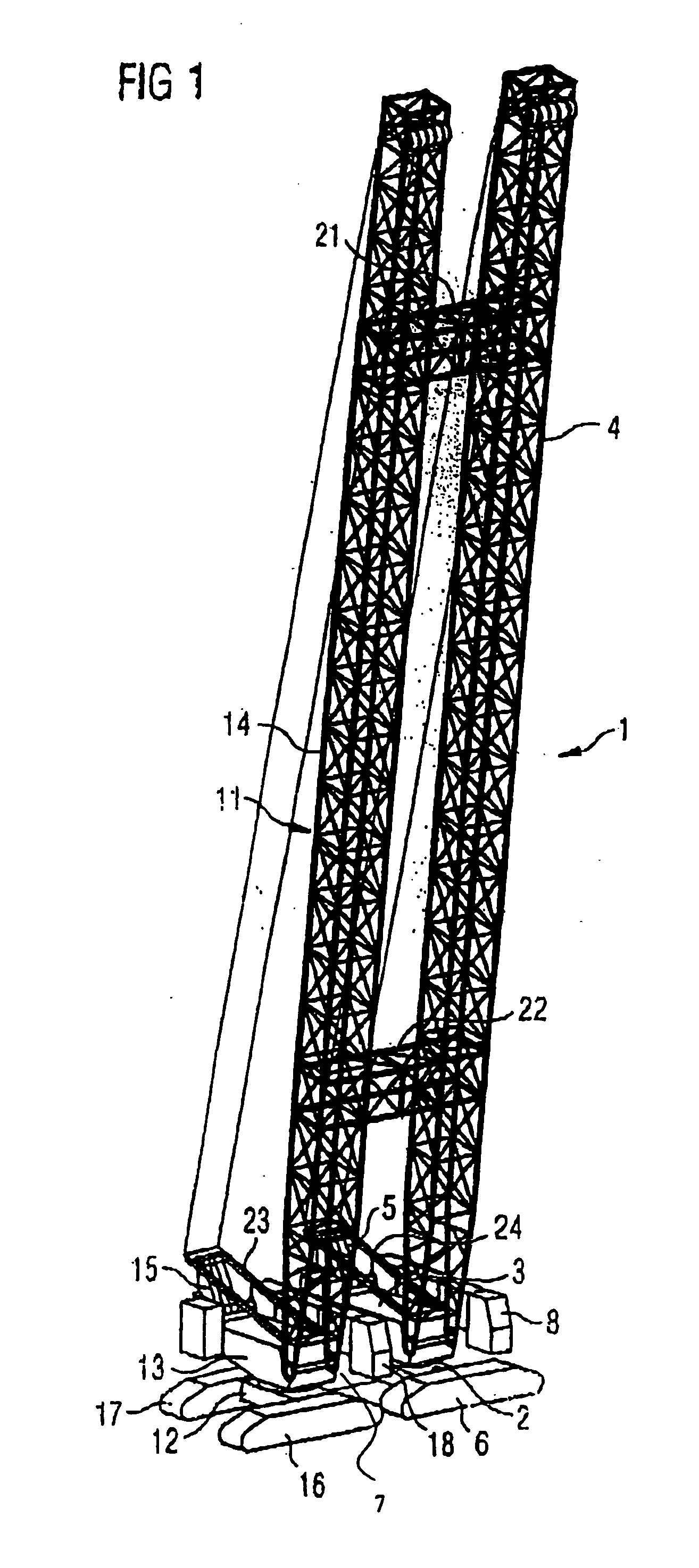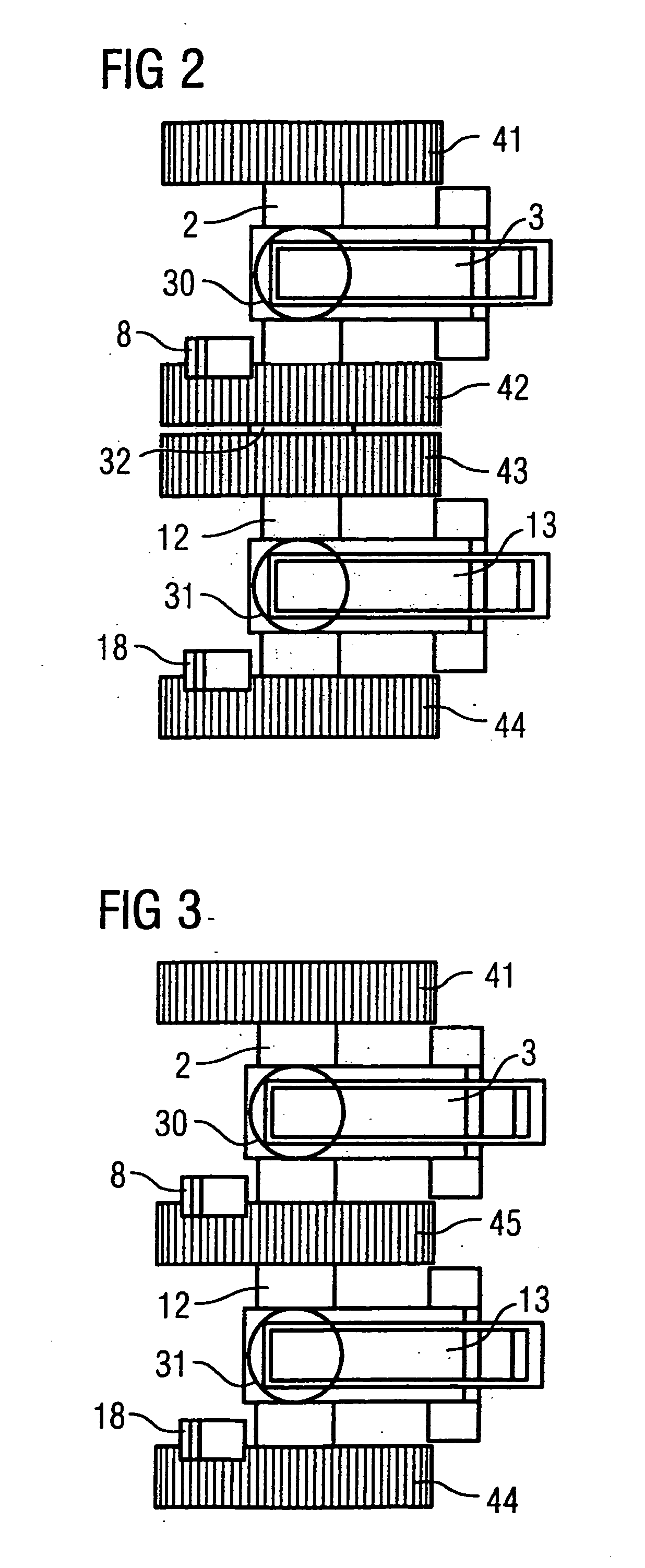Lattice boom crane for lifting heavy loads
a boom crane and crane technology, applied in the direction of cranes, portable lifting, hoisting equipment, etc., can solve the problems of reducing load, affecting the economics of the crane, and potentially not being able to lift the heavy ultimate load with such a crane, and achieve the effect of quick connection
- Summary
- Abstract
- Description
- Claims
- Application Information
AI Technical Summary
Benefits of technology
Problems solved by technology
Method used
Image
Examples
Embodiment Construction
[0035] In FIG. 1, a first exemplary embodiment of an inventive lattice boom crane with a crawler mechanism is shown in perspective illustration. In this exemplary embodiment, the inventive lattice boom crane comprises two individual lattice boom cranes 1, 11, each of which comprises a lower chassis 2, 12 and an upper chassis rotatably disposed thereon. A lattice boom 4, 14 is tiltably affixed on each respective upper chassis 3, 13. The tilting angle of the two lattice booms 4, 14 is adjustable by a tilting mechanism 5, 15, respectively, which are only schematically illustrated herein. The tilting mechanisms 5, 15 comprise not shown tilting winches, on each of which a cable is wound; the cables are respectively affixed to each scaffold trestle 23, 24. By winding and unwinding of the two cables, each respective tilt angle is adjustable. Due to the fact that the tilting mechanisms 5, 15 are synchronized according to the present invention, which synchronization can take place in an elec...
PUM
 Login to View More
Login to View More Abstract
Description
Claims
Application Information
 Login to View More
Login to View More - R&D
- Intellectual Property
- Life Sciences
- Materials
- Tech Scout
- Unparalleled Data Quality
- Higher Quality Content
- 60% Fewer Hallucinations
Browse by: Latest US Patents, China's latest patents, Technical Efficacy Thesaurus, Application Domain, Technology Topic, Popular Technical Reports.
© 2025 PatSnap. All rights reserved.Legal|Privacy policy|Modern Slavery Act Transparency Statement|Sitemap|About US| Contact US: help@patsnap.com



